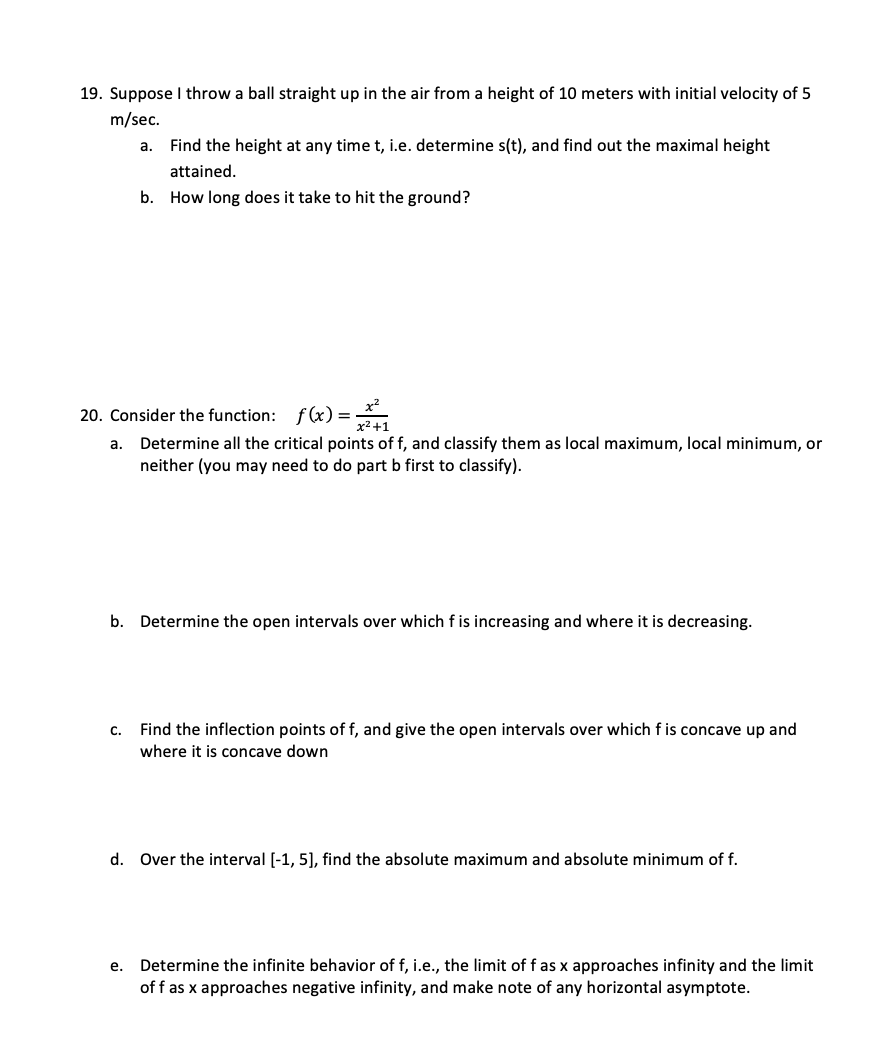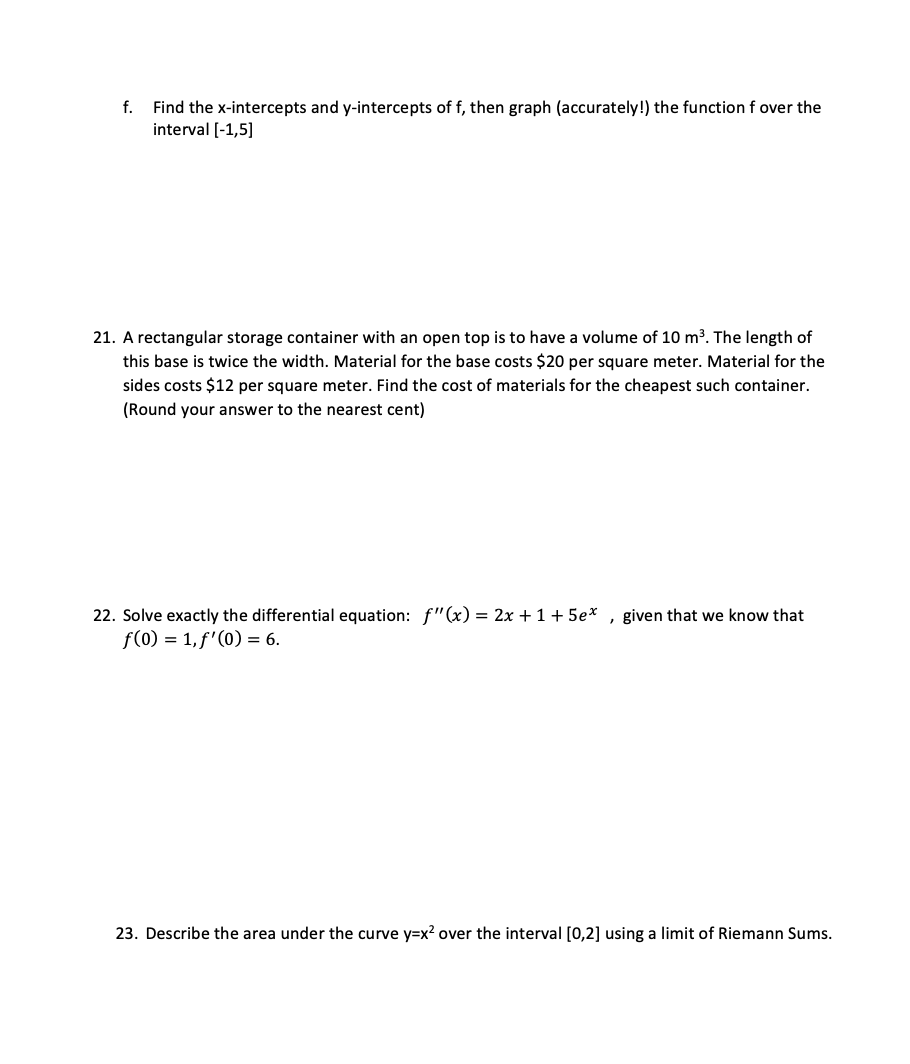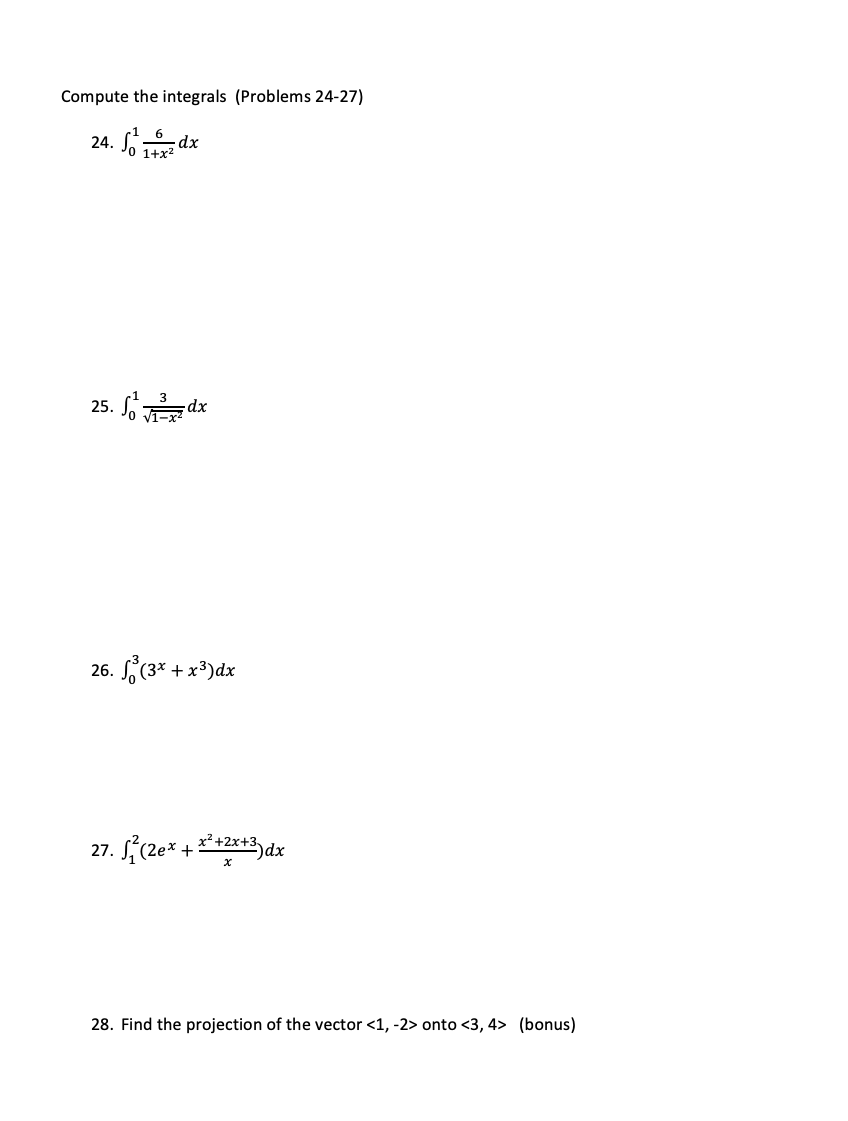Please can anyone help me with these questions. And can you make the solving in a clear way. Thank you!!
1B. 15. Using differentials, approximate: 3'3271 16. Suppose I inate a spherical balloon with water at a constant rate of 1 mafsec. The balloon is known to explode when the volume reaches 10 m3. What will the rate of change of the radius be at the instant {before} the balloon explodes? Equation for volume of sphere of radius r: V = Ema. Hint: First nd radius at explosion. Bismuth-210 has a half-life of 5.0 days. A sample originally has a mass of 800 mg. Find a formula for the mass remaining after t days. Find the mass remaining after 20 davs. When is the mass reduced to 1 mg? 19. Suppose I throw a ball straight up in the air from a height of 10 meters with initial velocity of 5 m/sec. . Find the height at any time t, i.e. determine s(t), and find out the maximal height attained. b. How long does it take to hit the ground? 20. Consider the function: f (x) =2 a. Determine all the critical points of f, and classify them as local maximum, local minimum, or neither (you may need to do part b first to classify). b. Determine the open intervals over which f is increasing and where it is decreasing. c. Find the inflection points of f, and give the open intervals over which f is concave up and where it is concave down d. Over the interval [-1, 5], find the absolute maximum and absolute minimum of f. e. Determine the infinite behavior of f, i.e., the limit of f as x approaches infinity and the limit of f as x approaches negative infinity, and make note of any horizontal asymptote.f. Find the nut-intercepts and v-intercepts of f, then graph (accurately!) the function f over the interval [-1,5] 21. A rectangular storage container with an open top is to have a volume of 10 m3. The length of this base is twice the width. Material for the base costs $20 per square meter. Material for the sides costs $12 per square meter. Find the cost of materials for the cheapest such container. (Round your answer to the nearest cent) 22. Solve exactlv the differential equation: f\"(x) = 21 + 1 + 59x , given that we know that f(0) = 1.1\"(0) = 6. 23. Describe the area under the curve 51:):2 over the interval [0,2] using a limit of Riemann Sums. Compute the integrals (Problems 24-27) Jo Itxz dx 25. So werdx 26. So (3* + x3) dx 27. S (2ex + * +2x+3) dx x 28. Find the projection of the vector onto (bonus)










